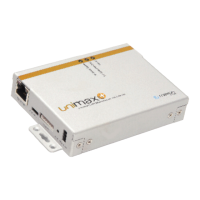an individual user and the remote site (for example, an Internet service provider), the
session can be monitored for billing purposes.
4.3 DHCP (Dynamic Host Configuration Protocol)
DHCP (Dynamic Host Configuration Protocol) is a communication protocol that lets
network administrators centrally manage and automate the assignment of Internet
Protocol (IP) addresses in an organization's network. Using the Internet Protocol, each
machine that connects to the Internet needs a unique IP address, which is assigned
when an Internet connection is created for a specific computer. Without DHCP, the IP
address must be entered manually at each computer in an organization and a new IP
address must be entered each time a computer moves to a new location on the
network. DHCP lets a network administrator supervise and distribute IP addresses from a
central point and automatically sends a new IP address when a computer is plugged
into a different place in the network.
DHCP uses the concept of a "lease" or amount of time that a given IP address will be
valid for a computer. The lease time can vary depending on how long a user requires
the Internet connection at a particular location. It's especially useful in education and
other environments where users change frequently. Using very short leases, DHCP can
dynamically reconfigure networks in which there are more computers than there are
available IP addresses. The protocol also supports static addresses for computers that
need a permanent IP address, such as Web servers.
4.4 NAT (Network Address Translation or Translator)
NAT (Network Address Translation or Network Address Translator) is the translation of an
Internet Protocol address (IP address) used within one network to a different IP address
known within another network. One network is designated as the inside network and
the other as the outside. Typically, a company maps its local inside network addresses
to one or more global outside IP addresses and un-maps the global IP addresses on
incoming packets back into local IP addresses. This helps ensure security since each
outgoing or incoming request must go through a translation process that also offers the
opportunity to qualify or authenticate the request or match it to a previous request. NAT
also conserves on the number of global IP addresses that a company needs and it lets
the company use a single IP address in its communication with the world.

